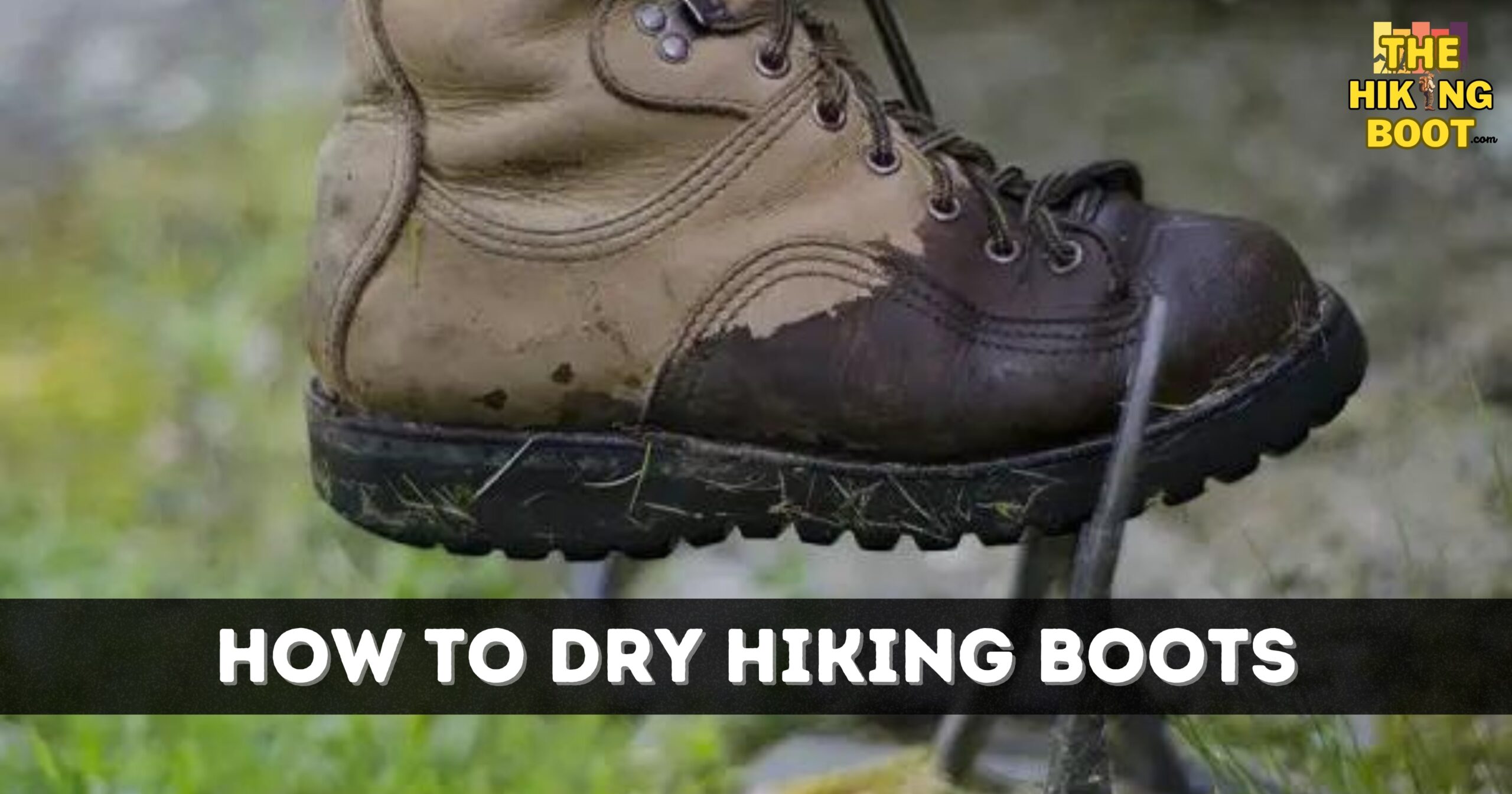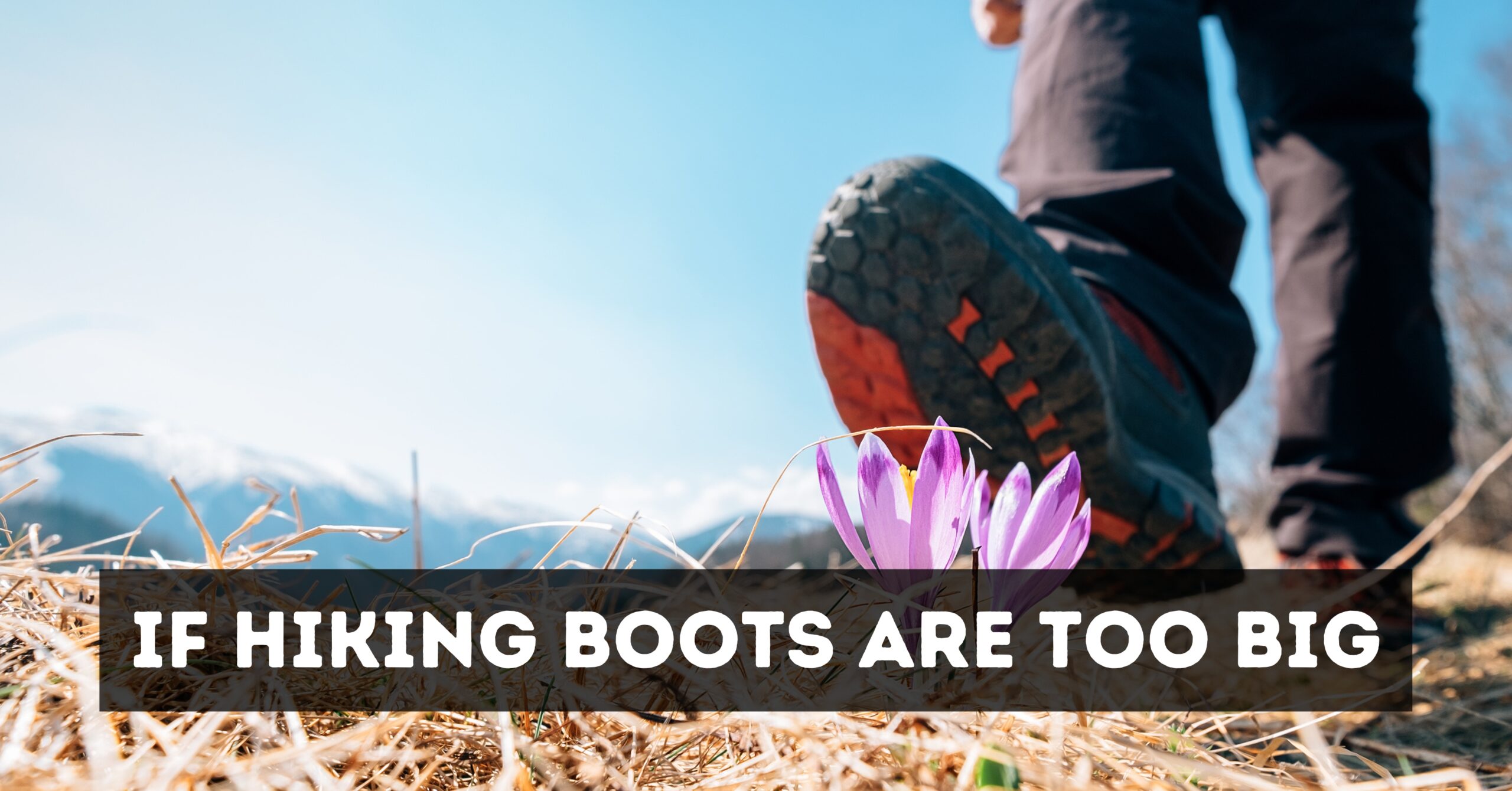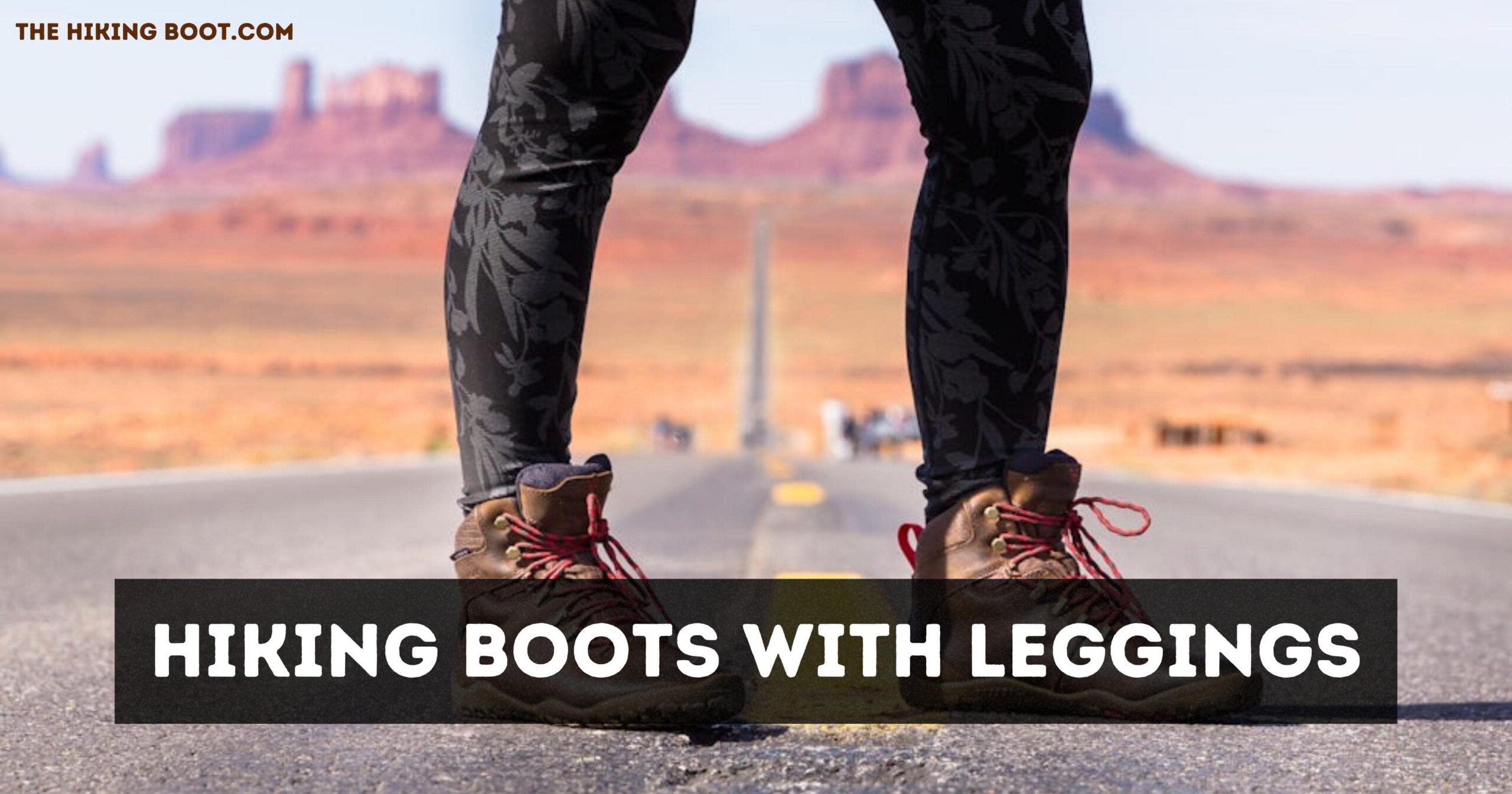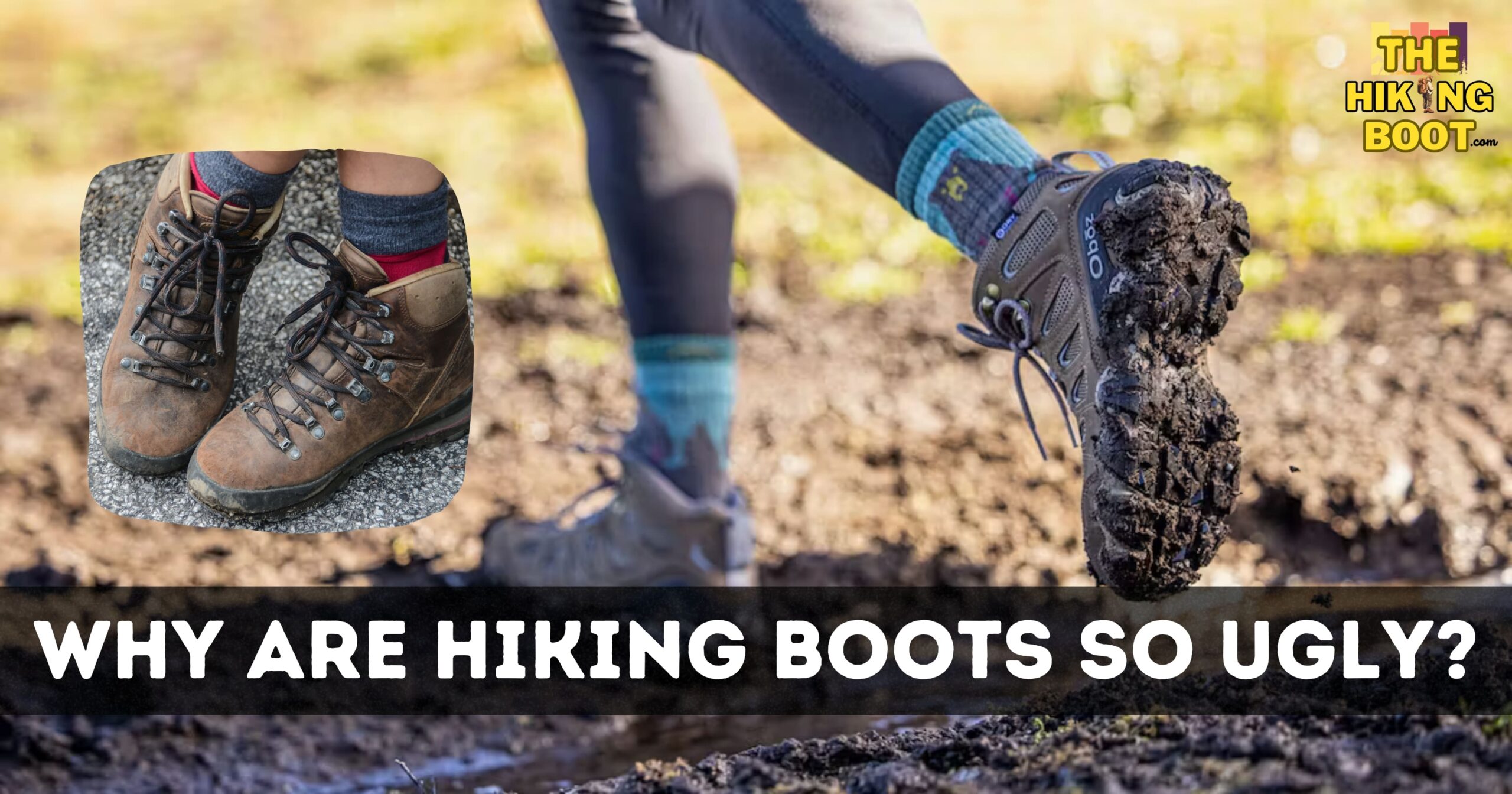Whether you just finished your first weekend-long hike or are a seasoned adventurer looking to upgrade your gear, having the right footwear is a critical component of any hike. Keeping your feet warm and dry throughout the journey is essential not only for comfort but also safety. But what happens when hiking boots do get wet? Knowing how to dry them properly can extend their lifespan significantly, so if you’re wondering “How do dry my hiking boots?
So here we discussed how to clean hiking boots inside and dry them quickly and safely.
In this blog post, we’ll provide 10 expert tips on how to go about drying your boots correctly – from specific solutions depending upon whether they are made with leather or synthetic materials, special maintenance products, and advice for storage afterward – so that you can enjoy stepping out in the great outdoors with confidence!
How To Dry Hiking Boots Quickly?
So here we discussed how to dry hiking boots fast and efficiently.
Before you can start drying your boots, it’s important to take out both the liner/inner sole and the insole.
Doing so will allow air to circulate throughout the boot while they are drying.
For best results, we recommend using a damp cloth or paper towel to clean the liners and insoles of any dirt or debris.
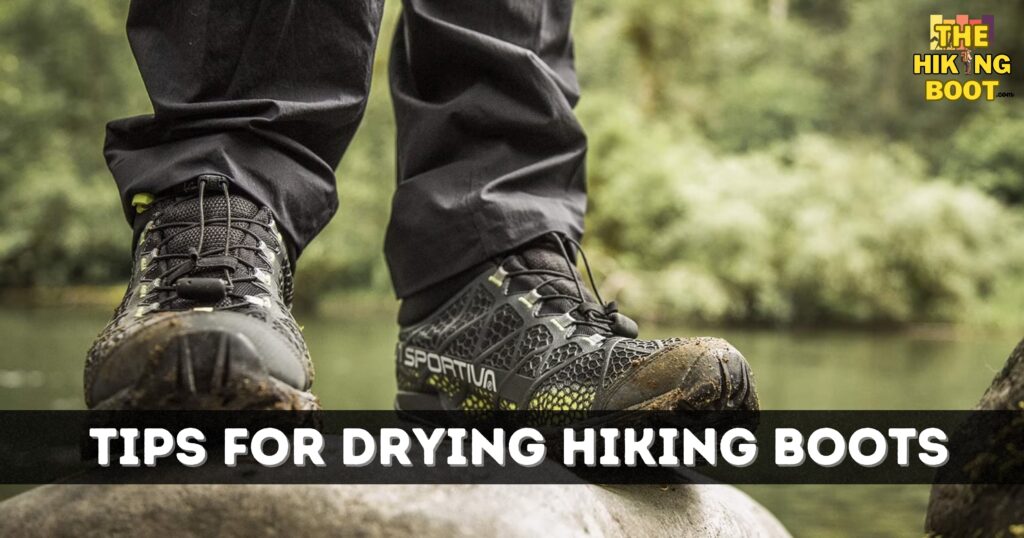
Top 10 Expert Tips For Drying Hiking Boots
Make sure to remove the insoles and laces of your boots before drying them so that the interior can dry out properly.
1- Remove Insoles and Laces Before Drying
It is essential to remove the insoles and laces from your boots before drying them.
Doing so will ensure that the interior of the boot can dry out properly.
Removing these components will prevent any damage that could be caused by heat or direct sunlight exposure.
It is also important to remember to replace these components when you are finished drying.
2- Stuff Your Boots with Newspaper Or a Dry Towel
Stuffing your boots with newspaper or a dry towel can help to absorb excess moisture from the interior of the boot.
This method is best used in conjunction with other drying methods.
When stuffing the boots, make sure that the material fills the space inside and compresses evenly against all surfaces.
3- Avoid Exposing Boots To Direct Heat Sources
Exposing your boots to direct heat sources such as fire or a heater can cause irreversible damage.
The heat can cause the materials of the boot to weaken, crack, and even warp due to extreme temperatures.
It is important to remember that not all boots are created equal and some materials may be more sensitive than others when exposed to high levels.
4- Alternate Drying Methods to Avoid Damage to Boots
It is important to alternate different drying methods when attempting to dry your hiking boots. Oftentimes, using a single method for too long can cause damage to the material of the boot due to excessive heat or moisture exposure.
When alternating between methods, it is best to start with the most gentle one and progress from there if necessary.
5- Use a Boot Dryer for Faster and More Efficient Drying
Using a boot dryer is often the most effective way to quickly and efficiently dry your hiking boots.
Boot dryers usually have multiple settings that you can use depending on the materials of the boot and the level of wetness.
They are much safer than other methods as they provide consistent heat without any risk of damage from direct exposure.
6- Use a Dehumidifier For Better Results in Humid Conditions
Using a dehumidifier to dry your hiking boots is an efficient and safe method that can be used in humid conditions.
A dehumidifier works by extracting humidity from the air, which helps reduce moisture levels inside the boot.
This reduces the risk of mold or mildew forming, as well as providing more consistent temperatures for drying.
7- Avoid Storing Wet Boots in An Enclosed Space
When storing wet hiking boots, it is important to avoid placing them in an enclosed space for extended periods.
Doing so can increase the chance of mold and mildew growth, as well as provide a damp environment that can weaken the materials of the boot over time.
8- Allow Enough Time for Boots to Dry Completely
It is important to allow your shoes enough time to dry completely before wearing them again.
This can vary depending on the materials of the shoes, but generally, it takes at least 12 hours
for leather boots and 24-48 hours for synthetic ones.
If possible, leashes boots out in a shaded area with good airflow until they are fully dry.
9- Avoid Drying Boots with High Heat or Strong Wind
When drying your hiking boots, it is important to avoid using high temperatures or strong winds.
High temperatures can cause the materials of the boot to weaken and crack, while strong winds can dry the exterior too quickly and leave the interior damp.
Both methods can dry out leather materials more quickly than synthetic ones and damage them in the process.
10- Regular Maintenance Can Prevent Moisture Buildup
Regular maintenance of your hiking boots can help to prevent moisture buildup and extend their lifespan.
This includes cleaning the boot after each use to remove any dirt or debris that may be trapping moisture, as well as conditioning them with a specialized product designed for the material of the boot.
How To Wash And Dry Hiking Boots?
For leather boots, use leather cleaner or mild soap to clean the outside of the boot, making sure not to get any water into the inside.
Once you’ve finished cleaning them, rinse them off with clean water and then dry them with a soft cloth or newspaper.
For synthetic boots, use mild soap and warm water to clean them, followed by rinsing with cool water.
Why Is It Important To Dry Hiking Boots?
It is essential to dry hiking boots because damp shoes can cause a lot of discomfort and potentially lead to foot injuries such as blisters and fungus growth.
Dry, breathable footwear will keep your feet comfortable and safe while you are hiking. Wet socks or shoes can also lead to odors due to bacteria growth.
1. Explanation of How Moisture Can Affect Hiking Boots
Moisture can have a significant effect on the durability and performance of hiking boots.
When moisture enters the boot, it can cause the materials to become weak and brittle, leading to cracks or tears in the material.
Moisture can also encourage mold and mildew growth inside the boots which will reduce their lifespan.
2. Types of Damage That Can Be Caused By Not Drying Boots Properly
Not drying your hiking boots properly can cause a variety of damage.
Moisture that is allowed to build up inside the shoe or boot can cause the material to weaken and crack, leading to tears or even complete failure.
3. Explanation of How Moisture Can Lead to Foot Problems and Injury
Moisture can lead to a variety of foot problems and injuries due to the lack of breathability and increased bacteria growth in the wet environment.
The Different Techniques For Dry Hiking Boots
Here is a question how to dry boots in dryer?
There are a few different methods for drying hiking boots, depending on the materials they’re made of.
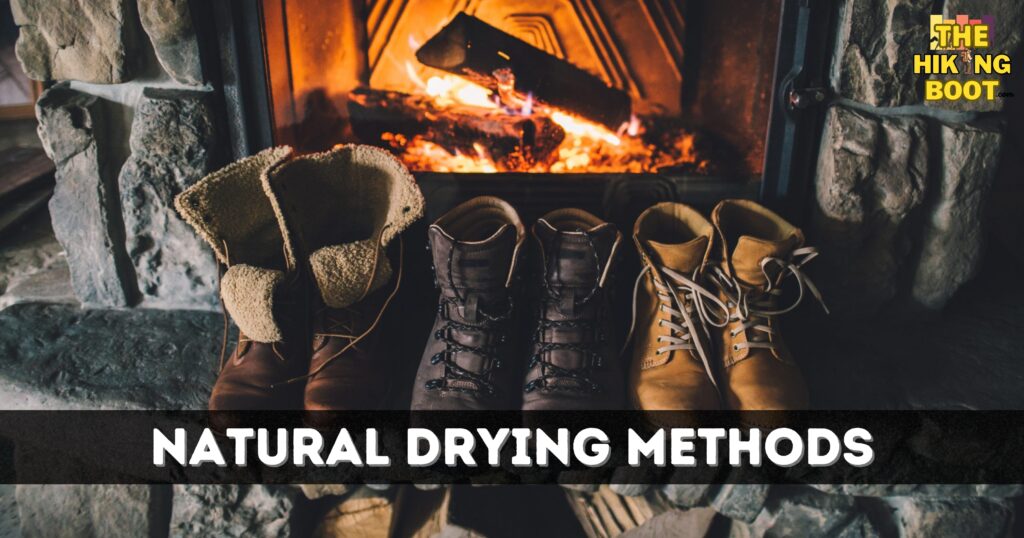
A. Natural Drying Methods
1. Air Drying
Air drying is the most common natural method of drying boots.
This can be done either indoors in a warm, dry room or outdoors.
2. Sun Drying
Sun drying is another natural method of drying hiking boots.
This is best done in direct sunlight, as the UV rays help to speed up the process.
3. Wind Drying
Wind drying is another natural method of drying hiking boots.
This method can be used to dry damp boots, as the wind will help outdoors and the speed of the wind can dry your boots.
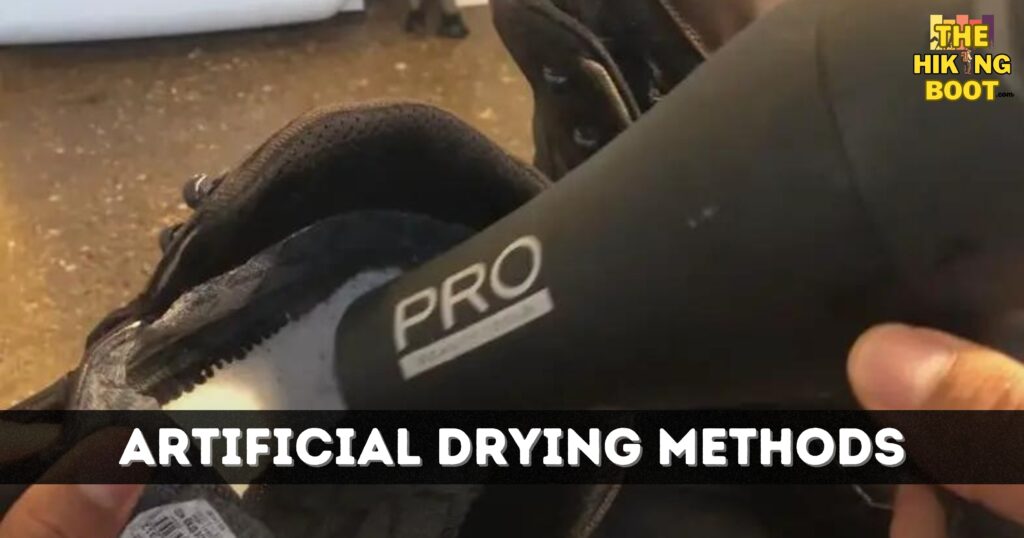
B. Artificial Drying Methods
1. Use of a Dryer
The use of a dryer is an effective way to dry hiking boots quickly and efficiently.
It is important to use low heat when using the method.
2. Use of a Boot Dryer
Here is a question in mind How To Dry Hiking Boots Using a boot dryer is an effective way to quickly and efficiently dry your hiking boots.
3. Use of a Dehumidifier
Using a dehumidifier to dry your hiking boots is an efficient and safe method that can be used indoors or outdoors.
Conclusion
Knowing how to dry hiking boots properly is essential for maintaining a comfortable and safe journey while out on the trails. Using the right methods and allowing enough time for them to dry completely can help extend their lifespan significantly.
Regular maintenance and proper storage can prevent moisture buildup in the first place, ensuring your feet stay warm and dry throughout any adventure. With these expert tips, you can now confidently answer the question “How do dry my hiking boots?” and keep your feet protected for many adventures to come.
FAQs
How Do You Dry Wet Hiking Boots Overnight?
Overnight drying of wet hiking boots can be done by placing them in a dry, well-ventilated area.
This helps ensure that any moisture contained in the boot is dissipated quickly and evenly.
It is important to rotate the boots every couple of hours to ensure even drying on all.
How Do You Dry Hiking Shoes Quickly?
The quickest way to dry hiking shoes is by using a fan or hair dryer on the lowest setting.
Can I Put Hiking Boots in the Dryer?
No, it is not recommended to put your hiking boots in the dryer. This can damage the materials of t and well as decrease their lifespan significantly due to the high temperatures used. Direct exposure to heat from a dryer can cause leather boots to crack and synthetic ones to melt.
How Long Do Hiking Shoes Take to Dry?
The amount of time it takes for hiking shoes to dry can vary depending on the materials used. Generally, it takes at least 12 hours.
How Can I Dry My Boots Fast?
The quickest way to dry boots is by using a fan or hair dryer on the lowest setting. This helps expedite the process without risking it.
